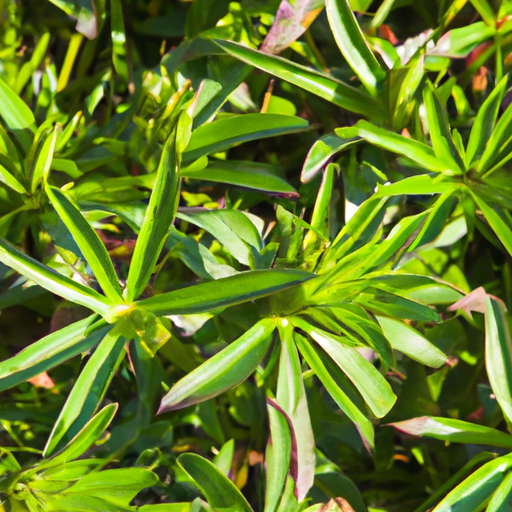The Wonderful World of Culantro: A Flavorful Herb for Your Culinary Adventures
If you are a fan of aromatic herbs and crave a burst of unique flavor in your dishes, allow me to introduce you to culantro. With its distinctive taste and a myriad of culinary uses, culantro is a hidden gem in the world of herbs. In this blog post, we will explore everything you need to know about this fascinating herb – from its flavor profile and common culinary applications to its nutritional value and interesting history. Let’s dive in!
The Flavorful Profile of Culantro
Culantro, also known as Mexican coriander or serrated coriander, is often confused with its close relative, cilantro. While both herbs display similar characteristics, culantro has a flavor profile that packs a punch. Its long, serrated leaves boast an intense, almost citrusy aroma, coupled with hints of cilantro’s characteristic earthy and slightly minty taste. The bold flavor makes culantro an excellent addition to any recipe, especially when you need an herb that can withstand high heat and long cooking times.
A Versatile Herb in the Kitchen
Culantro is widely used in various cuisines worldwide, including Latin American, Caribbean, and Asian cooking. Its versatility means it can elevate a wide range of dishes, whether you’re preparing soups, stews, sauces, marinades, or even salsas. The herb pairs exceptionally well with bold flavors like garlic, chili peppers, cumin, and lime, enhancing the taste while adding its own unique touch.
Nutritional Benefits of Culantro
In addition to its exceptional flavor, culantro also offers several nutritional benefits that may surprise you. Packed with vitamins and minerals, this herb is a fantastic addition to a well-rounded diet. Culantro is a rich source of vitamin C, an essential nutrient that supports immune function and collagen production. It also contains vitamin A, which aids in maintaining healthy vision, and vitamin K, which plays a role in blood clotting and bone health. Additionally, culantro provides iron, calcium, and magnesium, important minerals that support various bodily functions.
Ancient Origins and Interesting Facts
Culantro has an intriguing history that stretches back centuries. Originating in Central America and parts of South America, it was highly regarded by the ancient Aztecs and Mayans for its culinary and medicinal properties. Dried culantro seeds were even found in Peruvian tombs, indicating its significance in ancient cultures.
Despite its popularity in Latin American and Caribbean cuisines, culantro is relatively unknown in other parts of the world. Its leafy appearance might resemble parsley or cilantro, but culantro’s serrated leaves and potent flavor are distinctively different.
To fully appreciate culantro’s flavor, it is best to use it fresh, adding it towards the end of the cooking process. This preserves its unique essence and ensures its captivating aroma permeates your dish.
Culantro is an herb that deserves a place in any adventurous cook’s kitchen. Its bold and enticing flavor, wide range of culinary uses, and rich nutritional value make it an herb worth exploring. From soups and stews to sauces and salsas, culantro can take your dishes to new heights. So next time you’re seeking a burst of boldness in your cooking, don’t forget to reach for the vibrant leaves of culantro and let its magic unfold in your kitchen!
Remember, culinary exploration is all about discovering new flavors and expanding our horizons. Give culantro a try, and who knows, it might just become the secret ingredient that transforms your favorite dishes into culinary masterpieces!
Facts about Culantro:
- Culantro (Eryngium foetidum), also known as Mexican coriander, long coriander, or recao, is a herb that is widely used in Caribbean, Latin American, and Asian cuisines.
- Culantro is native to Central and South America and is believed to have originated in the Caribbean region.
- The leaves of culantro have a strong flavor and aroma that is often described as a combination of cilantro and citrus.
- Culantro is commonly used as a flavoring agent in soups, stews, curries, and many other dishes. It is particularly popular in dishes from Puerto Rico, Thailand, and Trinidad and Tobago.
- In some Caribbean countries, culantro is used to make a popular condiment called “recaito,” which is a blend of culantro, bell peppers, onions, garlic, and other herbs and spices.
- Culantro is rich in several beneficial nutrients including vitamins A and C, calcium, iron, and antioxidants.
- In traditional medicine, culantro has been used to treat a variety of ailments, including digestive issues, fever, and high blood pressure.
- Culantro has natural antimicrobial properties, which may help in preventing the growth of certain bacteria and fungi.
- Unlike cilantro, which has a similar flavor profile but has delicate and flat leaves, culantro has long, serrated leaves that resemble parsley or coriander leaves.
- Culantro has a long history of use in cooking and medicine. It was used by the ancient Mayans and Aztecs, and it has been cultivated for thousands of years.
- Culantro leaves can be harvested when they are young and tender, and they can be preserved by freezing or drying for future use.




Use the share button below if you liked it.
It makes me smile, when I see it.